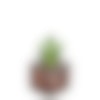Designing the Catch-All
The catch-all was initially conceived as a kind of shelf. We found, however, that a single ledge was limited in functionality. We wanted something that was more practical, able to both showcase and store our everyday essentials while integrating seamlessly into the home.

As many of us toss our everyday items into bowls or trays, we wondered how we could combine that with the functionality of a shelf. Inspiration came in the form of one of our laptop stands.
Our design team inverted the stand, put it up against the wall and thought it had a welcoming feeling, like a pair of hands cupped to receive something precious. Taking it into the shop, they cut it in half, and realized they had a natural basin.

Still, a wedge of molded plywood was just that and nothing more. The onus now was to explore and settle on the elements needed to make it into a functional catch-all. The goal was to find a way to make the act of hanging a set of keys or setting a wallet aside attractive.

The first prototypes featured several different lengths, as well a version with a sweeping, multi-level platform swathed in leather. The concepts were hung to the wall using a French cleat, a horizontal piece of molding that the product slots onto when hung.

As we neared our final design, we tallied our costs and found we were over budget. Our engineering team suggested removing the French cleat and replacing it with keyhole slots in order to reduce production costs. We then leveled out the basin, and replaced the leather with the wool felt found in a number of our products. Three brass pegs nestle inside the lower lip of the molded wood, giving a hidden spot to hang keys or lanyards, while the brass dots peeking through on the outside are a subtle, eye-catching detail.

Final assembly is done completely in-house by our team at our Portland, OR, workshop. In the laser shop, our logo is engraved on the inside of the molded wood, then the form is passed to production to be put together.
The wool felt lining is affixed to the aluminum basin, which is then attached to the molded wood.
Installed, the angle of the wood and its chamfers gives the impression of reaching out and catching while keeping the stuff that you may not want to see lying out on a side table or countertop out of the sightline and tucked away.


From initial concept to finished product, the catch-all required roughly four months of work. To date, it is one of our favorite products—equal parts form and function—and is welcome in spaces both big and small.
Shop the Catch-All
Available in Walnut or Maple
Shop For Home
Our catch-all is a central part of our home collection—each product is meant to bring clean design to your living space, in a way that gives you flexibility and functionality.



































